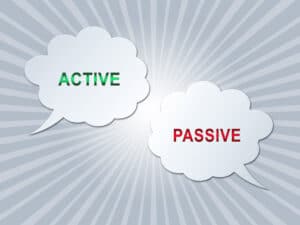Crafting effective content marketing copy is the goal of every marketer. There are a vast number of details that contribute to the creation of the perfect piece including making sure it reflects brand guidelines, reaches the target audience and uses the correct voice your brand has established. Because there are so many features to consider when crafting effective copy, it can be easy to find yourself falling into a common marketer’s writing trap: being overly wordy in your content marketing.
While it is important to ensure each post you create has the voice and personality of your brand at its center, it is equally as important to make sure you deliver that voice and personality quickly and concisely before you lose your reader. In this article we discuss the importance of eliminating wordiness in your content marketing and five tips for how to do so.
The Importance Of Avoiding Wordiness In Your Content Marketing
Nearly all information a person consumes is from some sort of digital content, primarily through their various social media feeds. As such, your content marketing has to be compelling enough to catch your audience’s attention while they scroll and keep them interested long enough to digest the important information. You may be thinking, “Not a problem! I’m a great writer, sounds easy enough to me.” But here’s the catch: Our collective attention spans are growing narrower at an alarming rate. As Rebecca Riserbato from HubSpot tells us, you have mere seconds to catch your audience’s attention before they move on to something new. Avoiding wordiness in your content marketing is key to grabbing their attention and sustaining it long enough to persuade them to follow your call to action.
While the idea of only having seconds to hook a consumer does sound a bit terrifying, there are some simple things you can do to avoid wordiness in your content marketing.
Use Active Voice In Your Marketing Copy
One of the easiest ways to cut out the wordiness in your content marketing is to use active voice instead of passive voice. You can read more about active voice in this Three Girls blog post. With active voice, the focus of the writing is on what the subject of the sentence is doing. Words are written in a certain order, usually beginning with the subject (noun), then the verb (action word) and finally the direct object (the noun in the sentence that is the object of the subject’s action).
This contrasts with passive voice, where the subject of the sentence is acted on by the verb. It tends to be a much weaker and impersonal form of writing than active voice, exactly the kind of tone you should try to avoid in content marketing. These types of sentences can be easily identified as they often contain the words: am, is, are, was, were, being, been, be, have, has, do, did, does, will, would, shall, should, may, must, can and could.
Some examples of sentences in active and passive voice are as follows:
| Active Voice | Passive Voice |
| She wrote the blog post. | The blog post was written by her. |
| The dog chased the cat. | The cat was chased by the dog. |
| My daughter sang a song. | The song was sung by my daughter. |
Using active voice not only shortens the number of words you use in your content marketing, but it also makes your marketing copy much more strong, direct and easy to read. When you only have a small amount of time to catch someone’s attention, using active voice is an excellent place to start.
Delete Introductory Phrases From Your Content Marketing

Deleting introductory phrases from your content marketing can help you catch your reader’s attention faster.
This one can be difficult for people to buy into, but another way to avoid wordiness in your content marketing is to delete the beginnings of your sentences. Oftentimes the beginning of a sentence is simply filler material; an introductory phrase that sets the stage for what is to come in the rest of the sentence. While this does at times sound nice and can help to contribute to the overall feel of a piece, your aim as a content marketer is to make your copy concise. These portions of sentences rarely contribute something extra to the copy, and when you only have seconds to get your point across, don’t waste them with a fancy introductory phrase that doesn’t say anything about your product or service at all. You want your reader to be able to quickly scan the material and immediately understand what you are offering; deleting the filler from your sentences is an efficient way to do this.
Common introductory phrases include:
- To be perfectly honest
- As a result of
- On the other hand
- As you can see
This is not to say you will never use introductory phrases in your content marketing. They certainly have their time and place, especially when transitioning from one topic to another and in longer form pieces such as blog posts. But watch out for overusing them; when you’re struggling with how to cut your marketing copy down, losing the introductory phrases can have a big impact.
Avoid Redundancies In Your Marketing Copy
Another tip for eliminating clutter in your marketing copy is to check for redundancies in your writing. Redundancies are two or more words put together that essentially mean the same thing. They are extra words that don’t add any meaning to the sentence and as such, taking them out of your content marketing is a perfect way to make sure you aren’t being overly wordy.
There are a plethora of redundancies commonly used in the English language, but some examples from Grammarist include:
- “Added bonus: A bonus by definition is something added.
- Browse through: To browse is to look through something, so through is already contained in its meaning.
- Close proximity: To be in proximity to something is to be close to it.
- Free gift: If it’s not free, it’s not a gift.
- Future plans: All plans pertain to the future.
- Prior experience: All experience is prior.”
This is clearly not an exhaustive list, but it does give you an idea of what redundancies typically are and hopefully it’s easy to see how they can jumble up a piece of content marketing. Being on the lookout for these phrases in your marketing copy is a great step toward avoiding wordiness in your content marketing.
Use Data Visualization In Your Content Marketing
If you have a lot of information to share with your audience, using data visualization (information in the form of a chart, diagram, picture, etc.) is a helpful way to reduce wordiness. Not only that, but it’s often an easier way for readers to read and understand information. A long paragraph full of data or statistics is difficult to wade through, and even the most interested reader will give up before they get to the end. Data visualization, however, lays out the information in a clear, concise way that is easy to follow.
If you do choose to use charts or diagrams in your marketing copy, it’s important to consider the best practices for data visualization. DBS Interactive provides several great examples of what these can look like, as well as the following important things to consider when you are creating your graphics:
- “Optimize your data visualization for mobile users.
- Avoid distorting the data or misleading viewers.
- Avoid cluttering up your design.
- Combine different types of data visualizations when it helps.
- Use icons to emphasize your important points.
- Use bold fonts to make textual information engaging.
- Use colors strategically in your design.
- Focus on the most compelling statistics.”
When done correctly, using data visualization in the place of multiple paragraphs will save your readers headaches, keep them interested and go a long way in avoiding wordiness in your content marketing.
Replace Proper Nouns With Pronouns In Your Marketing Copy
One last way to prevent wordiness in your content marketing is by occasionally replacing proper nouns with pronouns. As a reminder, a proper noun is a specific name for a person, place or thing. A pronoun, in contrast, is a word that can replace the proper noun. There are several ways to do this, but the easiest is when you take someone’s name and instead use he, she or they in place of it. This can be done with company names as well. Marketing copy can get bogged down and read very choppy if you repeatedly use someone’s name or business name. Replacing the formal name with pronouns from time to time will help your marketing copy flow better and while it might not always cut down on the number of words used, it does definitely help with the overall feeling of wordiness.
One Last Word About Avoiding Wordiness In Content marketing
While it is important to avoid wordiness in your content marketing in order to keep your audience’s attention, you do want to make sure that you don’t take the personality out of your marketing copy. There will be times when it’s appropriate and even preferred to use passive voice, an introductory phrase or proper nouns in your writing. The key is to vary your sentence lengths and structure and keep an eye out for the above ideas. Attempt to read your writing as your target audience, or even better, ask someone else to read it for you with an eye for wordiness. Your audience will thank you!
Need Help Eliminating Wordiness In Your Marketing Copy?
If you find yourself needing help eliminating wordiness in your content marketing, contact us at Three Girls Media. Our team of experienced content marketers is here for you! We offer a complimentary 30-minute consulting with our CEO, Erika Taylor Montgomery, to discuss your specific business and marketing needs. Reach out today!
Special Offer:
Sign up for a complimentary consultation during December and receive an Annual Marketing Planning Guide valued at $475! We offer a 30-minute phone consultation with our CEO, and can answer your questions and discuss your specific marketing needs - no strings attached. Call 408-218-2391 or contact us today to arrange your consultation!



